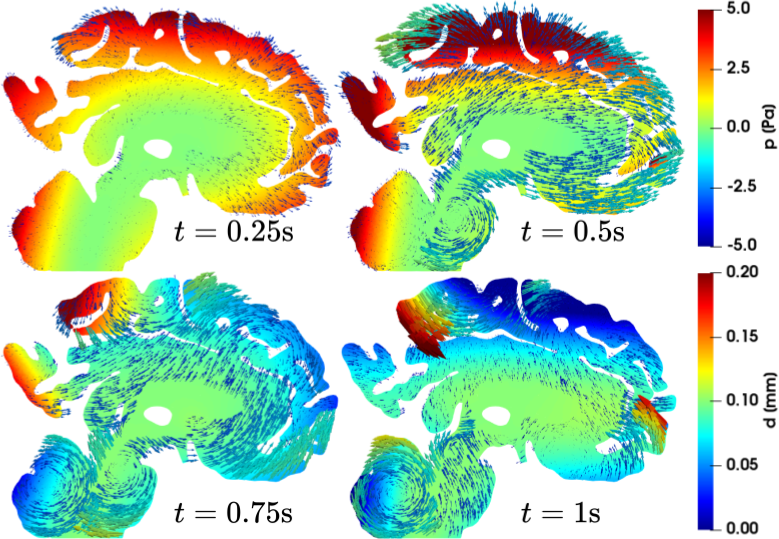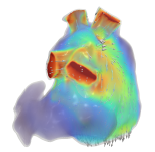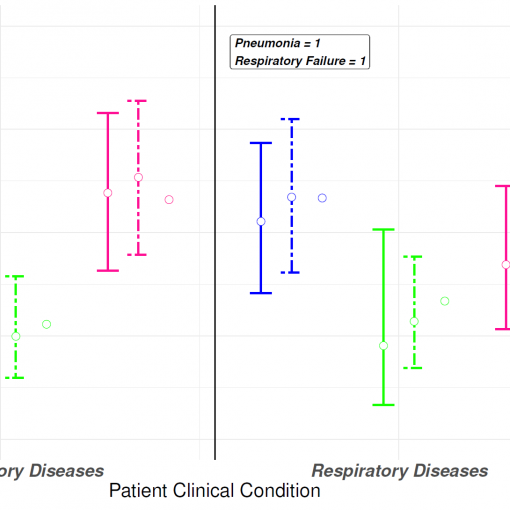A new MOX Report entitled “Polytopal discontinuous Galerkin discretization of brain multiphysics flow dynamics” by Fumagalli, I.; Corti, M.; Parolini, N.; Antonietti, P. F. has appeared in the MOX Report Collection.
Check it out here: https://www.mate.polimi.it/biblioteca/add/qmox/77-2023.pdf
Abstract: A comprehensive mathematical model of the multiphysics flow of blood and Cerebrospinal Fluid (CSF) in the brain can be expressed as the coupling of a poromechanics system and Stokes’ equations: the first describes fluids filtration through the cerebral tissue and the tissue’s elastic response, while the latter models the flow of the CSF in the brain ventricles. This model describes the functioning of the brain’s waste clearance mechanism, which has been recently discovered to play an essential role in the progress of neurodegenerative diseases. To model the interactions between different scales in the porous medium, we propose a physically consistent coupling between Multi-compartment Poroelasticity (MPE) equations and Stokes’ equations. In this work, we introduce a numerical scheme for the discretization of such coupled MPE-Stokes system, employing a high-order discontinuous Galerkin method on polytopal grids to efficiently account for the geo! metric co mplexity of the domain. We analyze the stability and convergence of the space semidiscretized formulation, we prove a-priori error estimates, and we present a temporal discretization based on a combination of Newmark’s beta-method for the elastic wave equation and the theta-method for the other equations of the model. Numerical simulations carried out on test cases with manufactured solutions validate the theoretical error estimates. We also present numerical results on a two-dimensional slice of a patient-specific brain geometry reconstructed from diagnostic images, to test in practice the advantages of the proposed approach.





